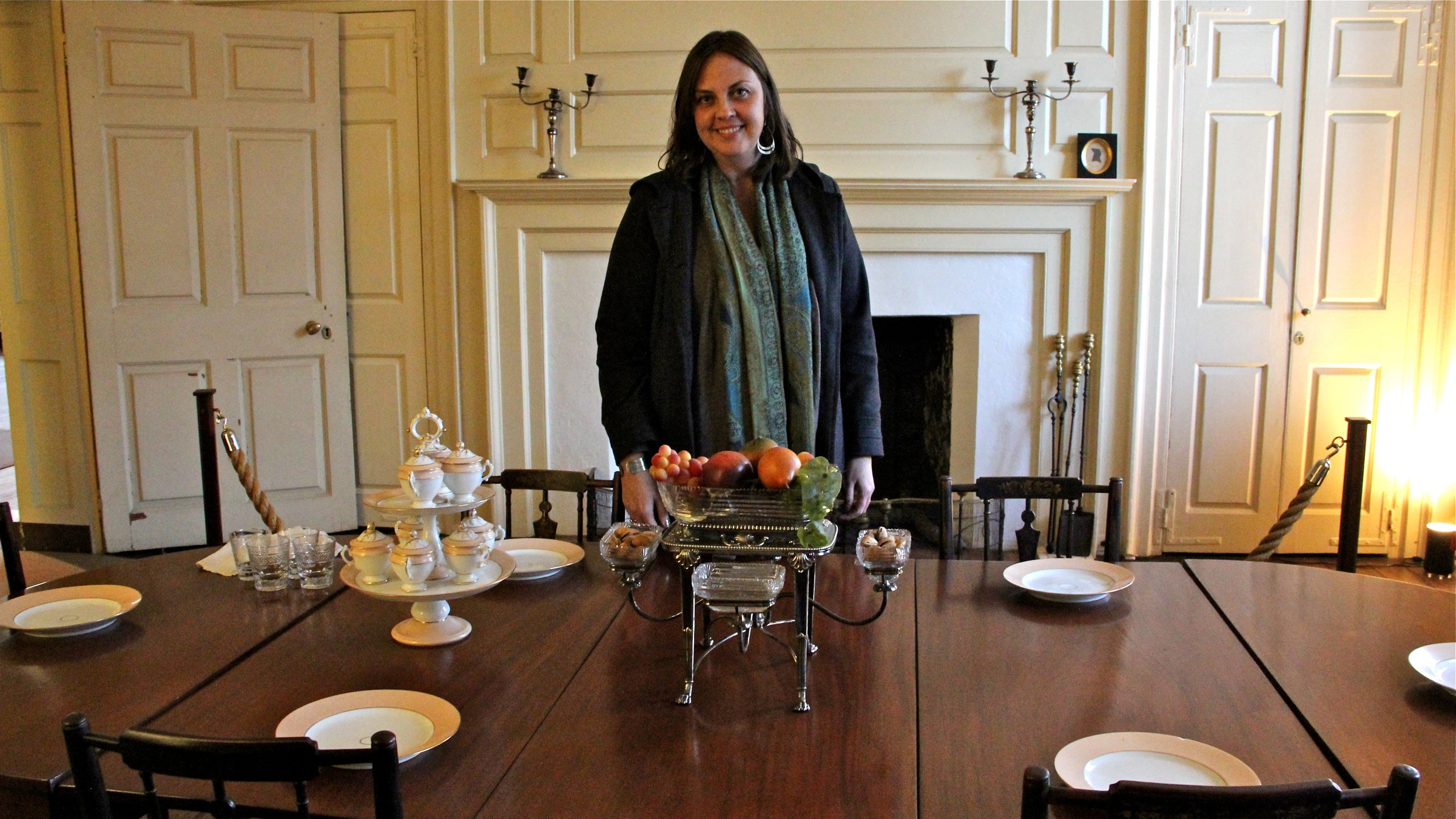Understanding a slave’s essential role in the Colonial kitchen

Kelley Deetz, a history professor at the University of Virginia, visits the historic Cliveden House in Philadelphia's Germantown. (Emma Lee/WHYY)
The center of many homes is the kitchen; for a lot of people that is where the most activity and gathering happens. That was also true in Colonial homes that held slaves.
A forthcoming book about African-American slaves in the kitchen traces huge social and cultural exchanges happened between owners and their slaves in the kitchen.
Kelley Deetz, a research associate for the Presidents Commission on Slavery at the University of Virginia, was invited to speak about her research at the historic Cliveden House in Philadelphia’s Germantown, as part of its Kitchen Conversations series. Cliveden House has both its original, 18th century brick hearth next to a mid-century kitchen installed by the last family to reside in the house in the 1970s.
Deetz’s book (to be published in 2016, tentatively titled “Bound to the Fire”) describes the complicated dynamic between the kitchen slaves and the masters of the house.
Wealthy homes did a great deal of entertaining, particularly in Virginia where Deetz did most of her research. The houses were expected to produce lavish meals of delicacies meant to impress guests.
“This is related to courting and marrying off children, and using food as a commodity to flex your wealth,” said Deetz. “You can’t serve saltine crackers and cheese whiz. You need to bring out the head cheese and oyster stew and puddings and brandies. Who is making this? It was the enslaved cooks.”
Much of the reputation of the house rested on the culinary skills of its slaves, who often brought or were taught cooking techniques native to West Africa.
“Early cookbooks have a European flavor, but by 19th century they have okra stew and gumbo, West African dishes served in the big house,” said Deetz. “The white folks liked it so much they wrote it down. You don’t write down a recipe you don’t like.”
Skilled cooks could leverage their position in the house for better treatment, special status, and mobility. Thomas Jefferson’s enslaved cook was sent to Paris to learn French cuisine. George Washington’s cook Hercules could freely walking around Philadelphia, dressed to the nines.
“The flip side is you were enslaved, constantly threatened, abused. This didn’t stop,” said Deetz. “But they could use their skills to have a certain kind of lifestyle.”
Those cookbooks also had medicinal recipes; the difference between medicine and poison is dosage, a notion not lost on the white slave owners. Many whites lived in fear of being done in by dinner. Deetz found court cases where cooks were hanged for poisoning their owners, and unusual cases where the slave got off. She found a case of a man named Billy who was tried twice for poisoning the same owner who, apparently, kept him on after the first poisoning.
“That’s curious to me. It opens up idea of trust: that enslaved folks working in the house maybe wouldn’t want to poison you even though your have enslaved them their whole life,” said Deetz. “It’s a very complicated relationship.”
WHYY is your source for fact-based, in-depth journalism and information. As a nonprofit organization, we rely on financial support from readers like you. Please give today.





